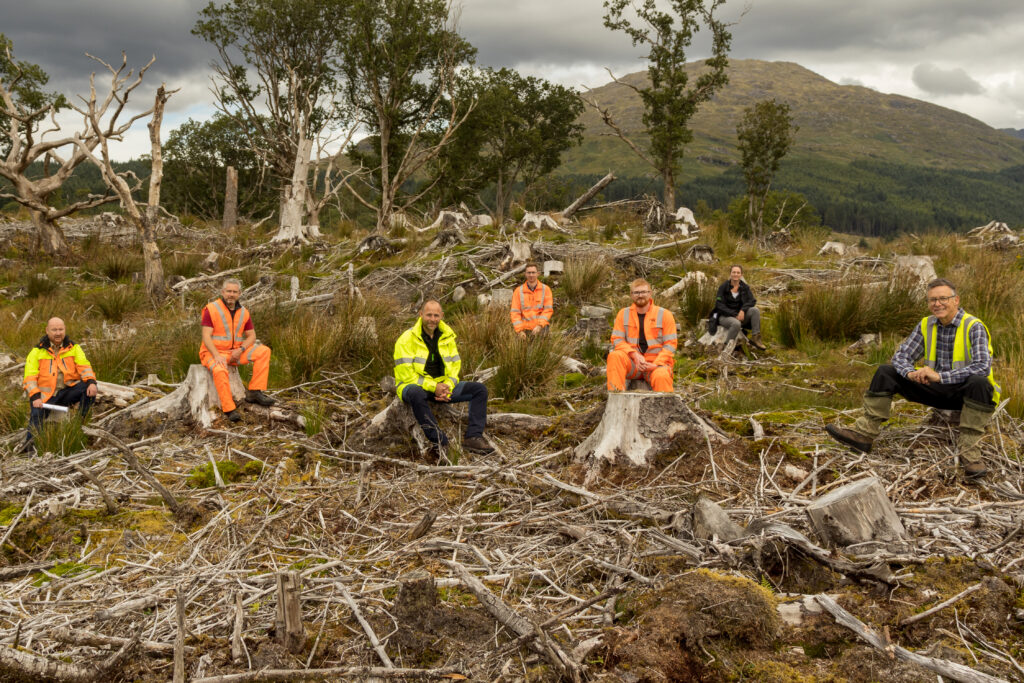Alex Hynes, managing director of Scotland’s Railway, sheds light on an industry-leading two-year pilot project to enhance natural habitats near the iconic Glenfinnan viaduct.
Network Rail Scotland (NRS) is committing £329,000 for Forestry and Land Scotland (FLS) – the Scottish Government agency responsible for managing Scotland’s national forests – to complete the most ambitious biodiversity enhancement project that Scotland’s Railway has ever undertaken.
The project area sits within Scotland’s endangered Atlantic rainforest zone.

Alongside FLS, NRS has agreed to the pilot project that will see a range of activities to protect, restore, and expand rainforest and peatland habitats over an area of around 200 hectares which will be seen by passengers travelling on the Mallaig Line.
Balancing biodiversity
The project will help to compensate for biodiversity lost during our ongoing tree and vegetation management programme. It will allow NRS to balance the removal of trees and vegetation elsewhere on the railway on a scale that would not be possible by replanting purely within its own boundaries.
FLS has the expertise, knowledge, systems and processes to deliver Scotland’s Railway’s sustainability objectives in a robust and demonstrable way. In addition, the land where the work will take place is owned by FLS and forms part of the dramatic setting of the Glenfinnan viaduct.
The project will support the protection, enhancement, and expansion of habitats including nationally and internationally designated sites managed by FLS. The long-term result of this activity is expected to be an uplift in biodiversity across the project area which forms part of the dramatic setting of the Glenfinnan viaduct.
Phase one
The first phase of works began in mid-January 2023 and consists of clearing and removing non-native species such as rhododendron across woodland and peatland habitats by hand.
Rhododendron and self-seeded non-native conifers are threatening the rainforest and peatland habitats. Seeds blow in from neighbouring gardens and plantations can quickly take over, blocking light, upsetting delicate nutrient and water cycles, and changing the ecosystem so it no longer supports the abundance, diversity, and rarity of the species found in Scotland’s rainforest.
The Network Rail funded activity will help to remove threats to vulnerable and internationally important woodland and peatland habitats. This will have major benefits for biodiversity, communities, visitors, climate resilience and carbon storage for generations to come. The longer-term objective is to restore ecosystem processes over 10 years to support full habitat recovery and the ongoing resilience of Scotland’s rainforest.

The project provides a route towards compliance with the recommendations of the Varley review – a paper which laid out how effectively Network Rail manages lineside vegetation on its estate – and has been endorsed by Transport Scotland. It will also meet Network Rail’s mandatory compliance standards.
Rail is already one of the greenest forms of transport and Network Rail is committed to working to reduce the industry’s impact on the environment through further electrification of its network and also by supporting innovative projects like this one.
About the area
FLS manages national forest land neighbouring the iconic railway line from Fort William to Mallaig, and Drumfern to Callop Woods southeast of Glenfinnan. This land forms part of the dramatic setting of the Glenfinnan viaduct, and is highly visible from the train line. Areas within it are accessible via footpaths from the Loch Shiel monument around 500 metres away.
The area is steeped in history and is rich in biodiversity, including six environmental and landscape designations. These designations from NatureScot reflect the fact that these are habitats of national and international importance.
The Glenfinnan sites are within Scotland’s rainforest zone which is the focus of a new large-scale campaign to save this globally important habitat from extinction. Priority native habitats within Glenfinnan sites include the designated but threatened Caledonian pinewoods, Atlantic oak woods, ancient alder wet woodlands along the river, and recovering peatlands.
These habitats are home to a wide range of notable species such as otter, which is a European protected species, and UK priority butterflies such as the pearl-bordered fritillary and chequered skipper. Eagles and ospreys are a regular sight. There is not only scope to protect and enhance these existing priority areas, but also opportunities to expand these woodland and peatland habitats further still to increase resilience and aid recovery of biodiversity.
Image credit: Network Rail

